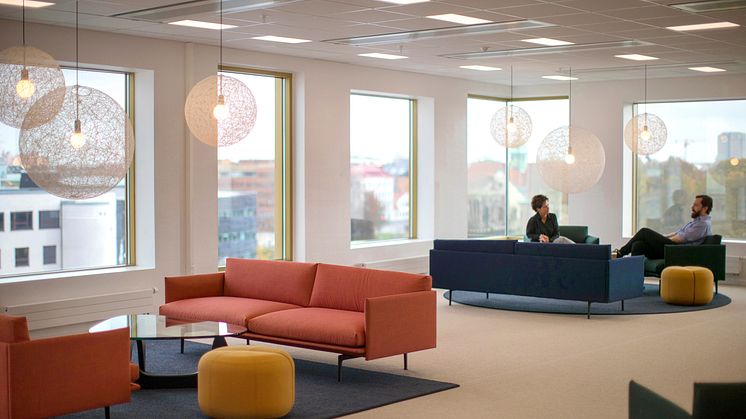
Blog post -
How does carbon dioxide indoors affect us?
Often when we experience bad air we tend to say that “there’s no oxygen in the room”. That’s not true at all. Air consists of approximately, 78.1% nitrogen, 20.9% oxygen, 0.9% argon and 0.04% carbon dioxide. It is actually the last percentage of the air content we should focus on instead of the oxygen. The percentage that consists of, among other things, carbon dioxide.
What is it?
Carbon dioxide (CO2) is a naturally occurring, odourless gas, which is measured in parts per million (ppm). It can be formed by the breathing of all aerobic organisms (plants, animals, fungi and many microorganisms), and outdoor sources are burning fossil fuels, such as gas and oil, transport, industry, and electricity generation. The outdoor content of carbon dioxide varies from around 350 ppm in rural areas to 500 ppm or higher in urban areas.
Indoors you can find much higher concentrations of carbon dioxide. This is simply because we breathe it out. At rest, a person produces 15 liters of CO2 per hour. With very heavy effort, the figure can increase to 120 liters per hour. So, the accumulation indoors is normally related directly to the number of people. But it can also come from non-living sources, such as space heaters, clothes dryers, stoves, or any other unvented gas-burning appliance.
Affecting the air quality
Carbon dioxide is normally used as an indicator of air quality. When the carbon dioxide levels are high it’s an indication of stagnant, stale air which normally has more particles and emissions which in turn can cause other problems both for your health and for the building. In short term it can cause common symptoms such as headaches, drowsiness, difficulties concentrating and a decrease in productivity/cognitive thinking skills.
So then, what are too high carbon dioxide levels? It is normally said that 400-800 ppm is the ideal state when you would feel comfortable. In well-ventilated buildings the carbon dioxide concentration is usually around 600-800 ppm.
Recommendations and guidelines:
350-450 ppm – Outdoor air concentration.
800 ppm – Often recommended as maximum level for the staff to perform optimally.
1000 ppm – Recommended maximum level in Sweden and many other countries.
2000 ppm – Fatigue increases as does the chance of headaches according to many studies.
5000 ppm – Maximum concentration during an eight-hour working day.
Reducing CO2 levels
The best way to reduce carbon dioxide is to increase the airflow by turning up the ventilation system. If that’s not possible, opening doors or windows is the easiest way. Assuming that the outdoor air is clean of course. With a demand controlled ventilation system, the air flow adapts automatically depending on how many people there are in the room. Securing that you always have a healthy and productive indoor air quality.
Sources:
https://www.smhi.se/kunskapsbanken/meteorologi/luft-1.6034
^ [a b] Nationalencyklopedin multimedia plus, 2000 (uppslagsord Koldioxid)
https://www.rehva.eu/rehva-journal/chapter/co2-monitoring-and-indoor-air-quality
https://www.folkhalsomyndigheten.se/livsvillkor-levnadsvanor/miljohalsa-och-halsoskydd/tillsyn-inom-halsoskydd/ventilation/#luftkvalitet



